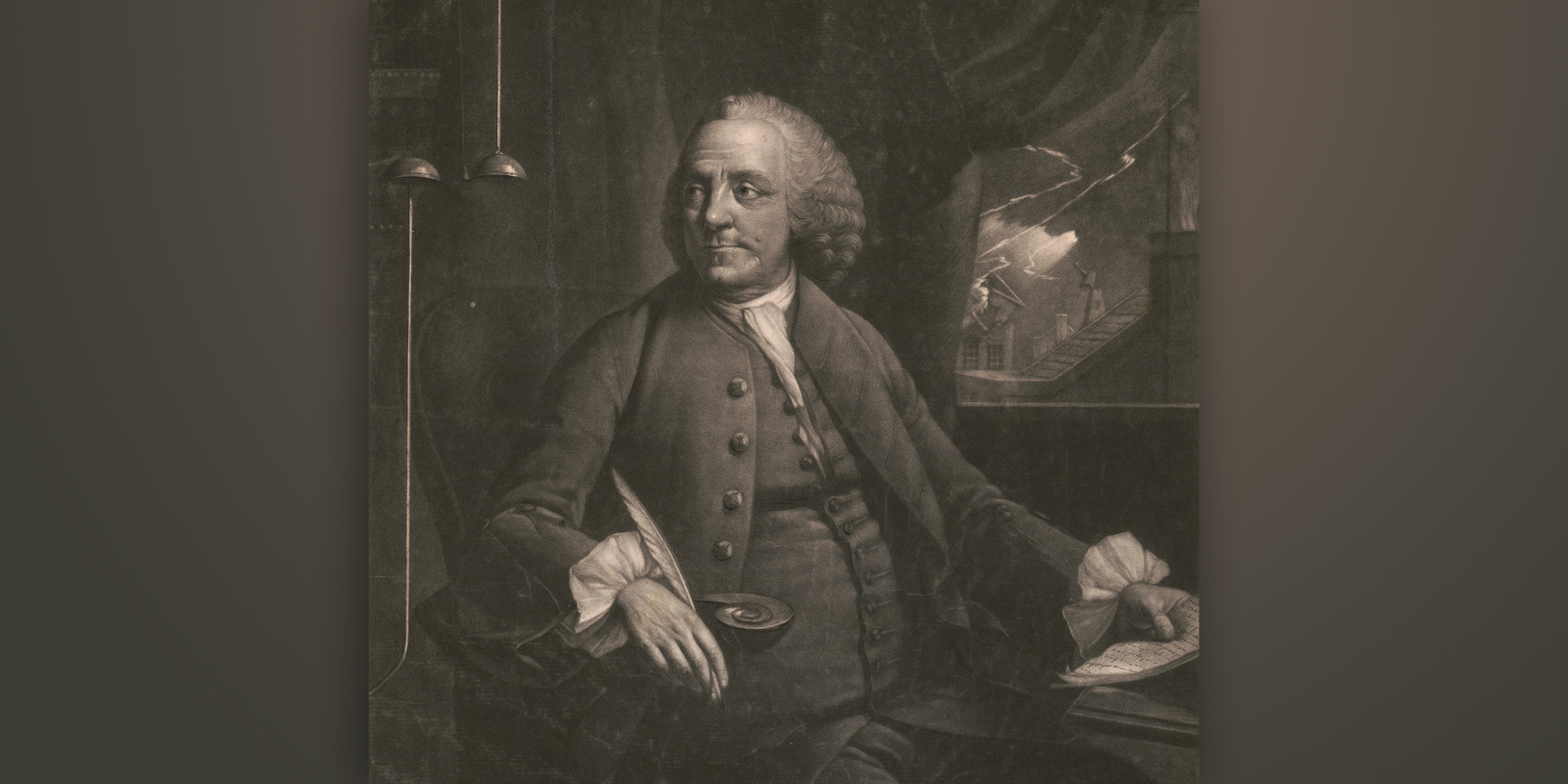Originally published 13 September 1993
Benjamin Franklin is usually depicted as a grandfatherly fellow, portly and genial, who would be at home by the fire of an 18th-century tavern, with a long-stemmed pipe in one hand and a tankard of porter in the other. In the familiar portrait of Franklin by his contemporary Edward Fisher, the great man seems fixed to his chair by a kind of weary contentment.
We tend to think of Franklin as a tinkerer and dabbler, occupations befitting a man in repose: inventor of bifocals and the Franklin stove, and quaint aphorist of Poor Richard’s Almanack.
In fact, the man behind the popular iconography and myths was energetic, insatiably curious, and prodigiously active. Even in the midst of strenuous diplomatic labors on the part of the infant American republic, Franklin squeezed science into every free moment.
His voluminous correspondence with scientists worldwide includes observations of clouds, storms, ocean currents, tides, rivers, sunspots, whirlwinds, lighter-than-air balloons, lead poisoning, daylight savings time, and the common cold. There is little that escaped his ravenous attention.
In Europe — today as in his own time — he is best known as the author of Experiments and Observations on Electricity, a book that helped lay the foundations of electrical science. It was Franklin, for example, who discovered that electrical charge was of two kinds, which he called positive and negative.
Not so widely known are some extraordinary ruminations by the diplomat-scientist that were detailed by Ronald Clark in his biography of Franklin. These may qualify Franklin to be called the “Father of Plate Tectonics.”
Plate tectonics is the revolutionary theory that turned geology upside down in the 1960s. The theory assumes that the Earth’s crust is egg-shell thin and floats upon the almost-fluid rock of the interior. The interior rock is in convective motion, driven by heat and gravity. These motions work upon the crust, fracturing it and dragging it about. Continents move and collide, and ocean basins are created and destroyed.
Those of us who were educated only a generation ago were taught that the Earth is rigid to its core — as solid as a bowling ball — and that any large-scale motions of the crust were up-and-down, not sidewards. The new slip-and-slide egg-shell model of the Earth seemed without antecedent.
But Ben Franklin had been there first.
In July 1747, he wrote to Jared Eliot, a Connecticut clergyman: “The great Appalachian Mountains, which run from York River back of these Colonies to the Bay of Mexico, show in many Places near the highest Parts of them, Strata of Sea Shells, in some Places the Marks of them are in the solid Rocks. ‘Tis certainly the Wreck of a World we live on!”
And what caused this “wreck” that heaved the floors of oceans high into the air, lifting sea shells to mountain peaks? Franklin found other clues during his travels in Britain.
In a coal mine at Whitehaven in northern England he observed the leaves and branches of ferns impressed upon slates which formed the natural roof of the mine, deep beneath the present surface of the Earth. Elsewhere in England he found oyster shells mixed with the rocks of a mountain top. Evidently, surface marshes had been depressed and the ocean floor thrust upwards.
Franklin wrote: “Such changes in the superficial parts of the globe seemed to me unlikely to happen, if the earth were solid to the center. I therefore imagined, that the internal parts might be a fluid more dense, and of greater specific gravity than any of the solids we are acquainted with, which therefore might swim in or upon that fluid. Thus the surface of the globe would be a shell, capable of being broken and disordered by the violent movements of the fluid on which it rested.”
This is an accurate description of the fundamental notion of plate tectonics, written a generation before James Hutton founded the science of geology with his Theory of the Earth in 1785, and more than two hundred years before the theory of plate tectonics changed our way of thinking about the Earth.
Of course, a scientific theory is more than a precocious intuition; it must be backed by observation and experiment. In Franklin’s time there was no way to ascertain the physical state of the Earth’s interior; it was not until the age of computers and international seismograph networks that this became possible.
But Franklin was clever enough to recognize that the wreck of the world was caused by “some internal mighty force” (as he wrote his brother Peter), that this force was capable of causing large-scale horizontal motions, and that the drift and crash of continents could best be explained by allowing the crust to move upon a turbulent fluid.
Two centuries were to pass before science caught up with Franklin’s astute intuition.



